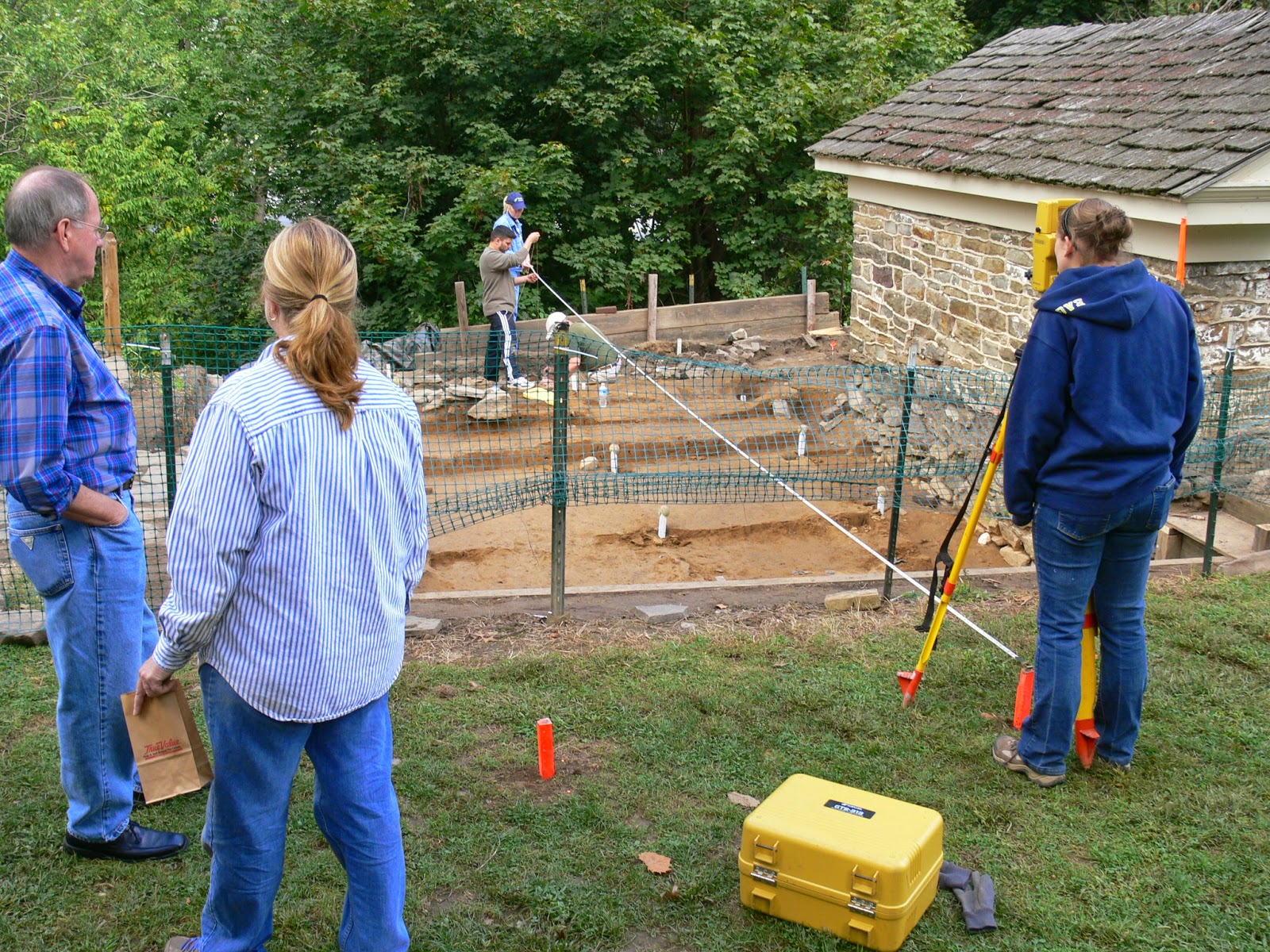As we wrap up our time in the field at Fort Hunter
Mansion and Park, we have found limited structural evidence of the French and
Indian War era fort. Though we have not found structural evidence of the fort,
we have found a number of artifacts, some that date to the French and Indian
War period and some that do not.
One of our more exciting finds this year is the “lock” mechanism of a Brown Bess musket. Brown Bess muskets were in service of the British Army from the early 1700’s to the early 1800’s. At the beginning of the war, which began in 1757, it is said that there were approximately 80 soldiers at the fort, but this changed dramatically when it was discovered that the majority of the war would be fought in the Ohio River Valley. Due to this realization the use of the fort became primarily for supply. At this time the fort was manned by much fewer men, approximately 30, who were a militia made up of local farmers and residents. These militia men would have provided their own weapons, which may have included a Brown Bess gun. This suggests that the gun part, which seems to have been discarded after breaking, could have been used by one of the Fort Hunter French and Indian war era men.
One of our more exciting finds this year is the “lock” mechanism of a Brown Bess musket. Brown Bess muskets were in service of the British Army from the early 1700’s to the early 1800’s. At the beginning of the war, which began in 1757, it is said that there were approximately 80 soldiers at the fort, but this changed dramatically when it was discovered that the majority of the war would be fought in the Ohio River Valley. Due to this realization the use of the fort became primarily for supply. At this time the fort was manned by much fewer men, approximately 30, who were a militia made up of local farmers and residents. These militia men would have provided their own weapons, which may have included a Brown Bess gun. This suggests that the gun part, which seems to have been discarded after breaking, could have been used by one of the Fort Hunter French and Indian war era men.
excavated musket lock with modern replica for comparison
Other military-related artifacts found this year include two musket balls and a French gun flint. Though we cannot be sure these objects are from the French and Indian War era, it is possible. Since the fort was manned primarily by a militia and they would have provided their own weapons, the different sizes of muskets balls and various types of gun flints found throughout the years of excavation at Fort Hunter can be explained. These militia men would not have all had the exact same weapons as an army would have had.
french flint and musket ball
Another interesting artifact that was found this year and in our excavations in
past years is a datable ceramic called Scratch blue. Scratch blue is an English
salt-glazed stoneware that was created by incising deep lines in the ceramic
body and filling it with cobalt blue oxide before firing leaving thin blue
lines in generally floral motifs after firing. This type of ceramic has a very narrow
production date range of 1744-1775. This date range includes the French and
Indian War period, suggesting that these ceramics may have been used by the
soldiers or militia men of the fort. Of course, most of the artifacts,
including the Scratch blue stoneware, the gun flints, and the musket balls
could have been used by the occupants of the Fort Hunter land during much of
the 18th and 19th century.
Scratch blue decorated salt-glazed stoneware
Otter Creek projectile point
References:
Noel Hume, Ivor
1976 A Guide to Colonial Artifacts of America Alfred A. Knopf, New York
Antill, P
2006 Baker Rifle. Electronic Document, http://www.historyofwar.org/articles/weapon_brown_bess.html.
Ryan, D. Michael
Brown Bess – Musket Misconception. Electronic Document, http://www.concordma.com/magazine/janfeb02/brownbessmusket.html.





No comments:
Post a Comment